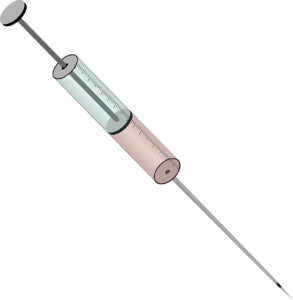Gina Hollenbeck never considered that she could have lung cancer. She did not fall into any categories that would put her at a higher risk of cancer; she didn’t smoke, she exercised, and she ate a healthy diet. When a variety of symptoms began, including a nagging cough and shoulder pain, a cancer diagnosis did not even cross her mind. Unfortunately she endured a multitude of misdiagnoses and failed treatments, all while her symptoms worsened. It was two months before she was finally able to get the correct diagnosis. Despite being told she had anaplastic lymphoma kinase + (ALK+) non-small cell lung cancer (NSCLC), Gina pushed through an intense treatment regimen and became one of the loudest advocates for those with lung cancer.
About Non-Small Cell Lung Cancer
Non-small cell lung cancer (NSCLC) is the most common form of lung cancer, and it comes in three different types: adenocarcinomas, squamous cell carcinomas, and large cell carcinomas. The majority of these cancers are caused by smoking cigarettes, but exposure to certain chemicals or materials may also increase the risk of cancer. These substances include arsenic, asbestos, chloride, formaldehyde, certain alloys or pigments, and other chemicals. A history of lung cancer in the family may also heighten one’s chance of developing NSCLC.
The early stages of this cancer see symptoms such as chest pain, coughing to the point of coughing up blood, fatigue, a loss of appetite, shortness of breath, losing weight, and wheezing. Later stages cause pain and tenderness in the bones, drooping eyelids, a hoarse or different voice, joint pain, nail problems, facial swelling, weakness, and trouble swallowing.
A diagnosis is obtained through a physical exam and evaluation of family and medical history. Tests will then be performed to confirm the diagnosis, as well as to assess the spread. These tests include bone scans, chest x-rays, MRIs, CT scans, complete blood counts, PET scans, sputum tests, thoracentesis, and biopsies. Further testing may be necessary to stage the cancer.
Surgery is typically the first step in treatment. The procedure may remove a lobe of the lung, a segment of the lung, or the entire organ. Other forms of treatment include chemotherapy, targeted therapy, laser therapy, photodynamic therapy, and radiation therapy.
Gina’s Story
Gina is a mother of two and a nurse. She lived an active life (whether it was playing tennis or running), followed a healthy diet, and never smoked. Her work as a nurse gave her extensive medical knowledge, which helped her when she began experiencing symptoms. A nagging cough, shoulder pain, and a sore throat would not go away.
It was these symptoms that were misdiagnosed multiple times, first as allergies, followed by gastric reflux. Her doctors would prescribe her medications for these conditions, which failed each time. Her symptoms not only continued, but they progressed. She was forced to take her diagnosis into her own hands; she got her own x-rays and took them to the emergency room herself.
It was these x-rays that led her to a pulmonologist, which finally gave her the correct diagnosis: Stage 4 ALK+ NSCLC. Gina took this in stride and decided that it meant she should “live every single moment to the absolute fullest.”
Her intense treatment regimen consisted of targeted therapy, removing a lung, and brain surgery to remove the cancer that had spread. Living through her diagnosis and treatment inspired her to become an advocate for those with lung cancer. She has created a 1,600 member group for people with ALK+ NSCLC and raised $600,000 for cancer research.
Her cancer diagnosis taught her to value every moment of her life, and it has also inspired her to become an advocate for her community.
Find the source article here.





-300x300.jpg)


